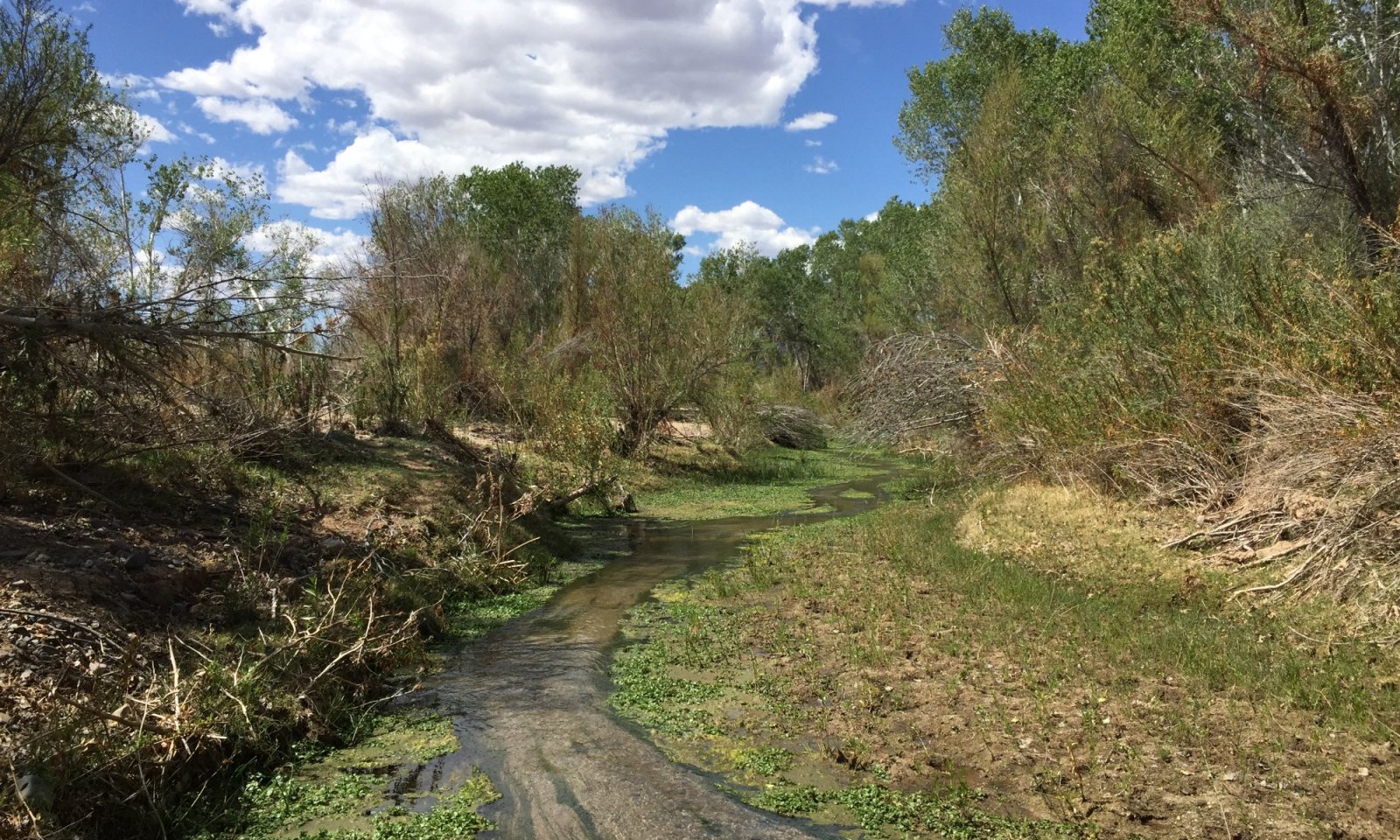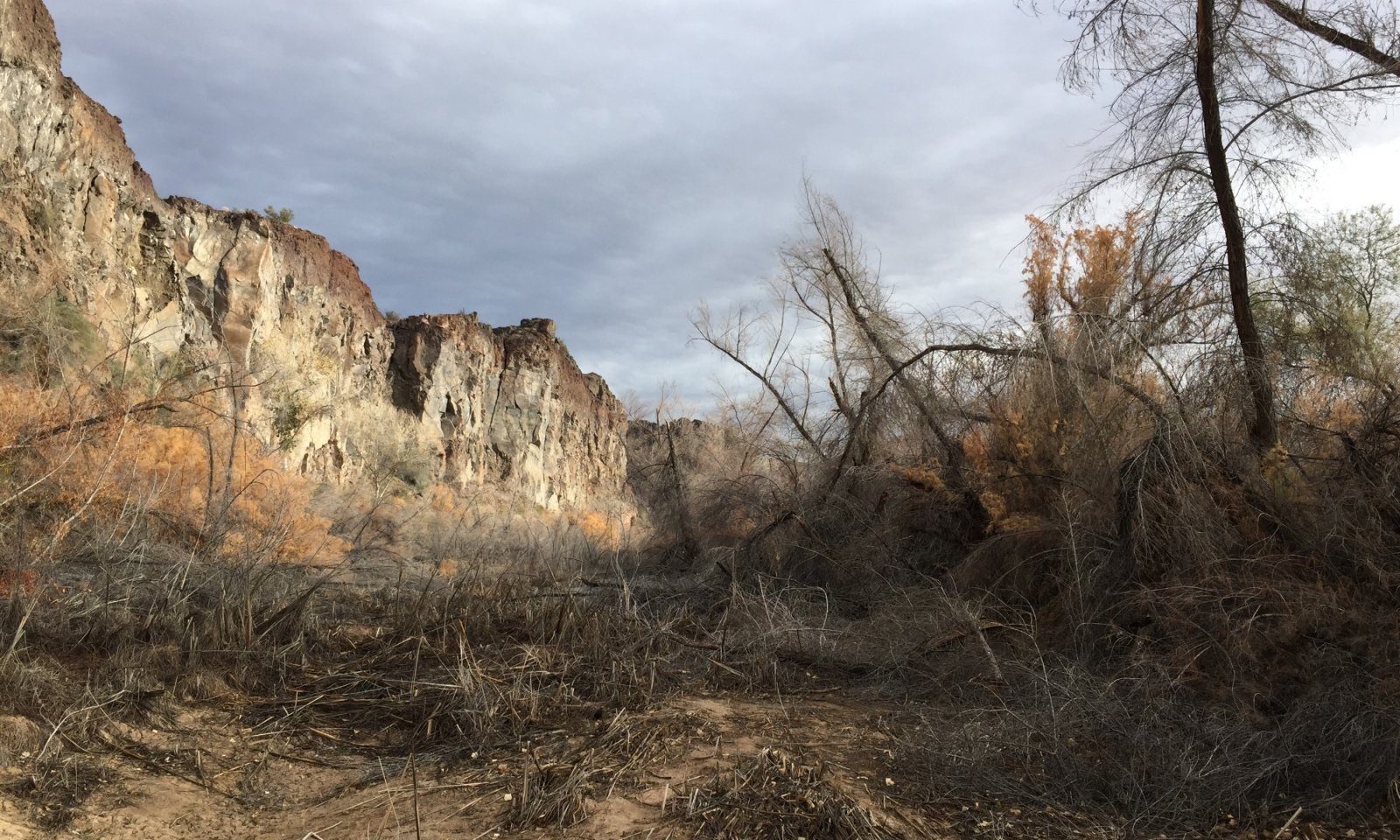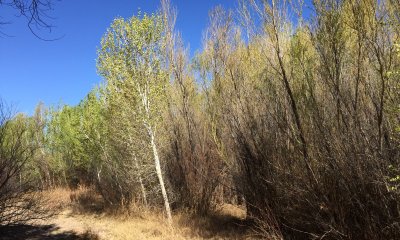
Sandy Bottom, Woodland 3"-7" p.z.
Scenario model
Current ecosystem state
Select a state
Management practices/drivers
Select a transition or restoration pathway
- Transition T1A More details
- Transition T2A More details
- Restoration pathway R3A More details
-
No transition or restoration pathway between the selected states has been described
Target ecosystem state
Select a state
Description
Sandy Bottom Woodland, 3"-7" p.z., is a cottonwood-willow dominated riparian gallery woodland. Perennial surface water occurs in long reaches, with sufficient flow to sustain native obligate wetland plants. Flash floods regularly occur, resulting in overbank flow and bank scour. Cottonwood and willow seeds germinate on wet sands along the braided watercourses, and seedlings quickly establish before water levels return to normal. Natural fire is not a regular occurrence, as indicated by old-growth cactus, like saguaro, growing adjacent to the site. Saguaro are extremely sensitive to heat from burning.
Submodel
Description
Non-native Mixed Woodland is similar in function and composition to Native Riparian. Saltcedar and other non-natives (such as tree tobacco, bermudagrass, and cocklebur) are intermixed with native species. Native tree recruitment can be affected by a reduction of flash flooding events, lowering of the water table, or saltcedar competition.
Submodel
State 3
Dense Non-Native Woodland



Description
The Dense, Non-native Woodland State is a near monoculture of saltcedar.
Submodel
Mechanism
Non-native species introduction by various mechanisms including animal transport, wind, and flooding.
Mechanism
Transition processes can include fire, channel-scouring flooding, or disturbance of normal flooding regime.
Model keys
Briefcase
Add ecological sites and Major Land Resource Areas to your briefcase by clicking on the briefcase (![]() ) icon wherever it occurs. Drag and drop items to reorder. Cookies are used to store briefcase items between browsing sessions. Because of this, the number of items that can be added to your briefcase is limited, and briefcase items added on one device and browser cannot be accessed from another device or browser. Users who do not wish to place cookies on their devices should not use the briefcase tool. Briefcase cookies serve no other purpose than described here and are deleted whenever browsing history is cleared.
) icon wherever it occurs. Drag and drop items to reorder. Cookies are used to store briefcase items between browsing sessions. Because of this, the number of items that can be added to your briefcase is limited, and briefcase items added on one device and browser cannot be accessed from another device or browser. Users who do not wish to place cookies on their devices should not use the briefcase tool. Briefcase cookies serve no other purpose than described here and are deleted whenever browsing history is cleared.
Ecological sites
Major Land Resource Areas
The Ecosystem Dynamics Interpretive Tool is an information system framework developed by the USDA-ARS Jornada Experimental Range, USDA Natural Resources Conservation Service, and New Mexico State University.





